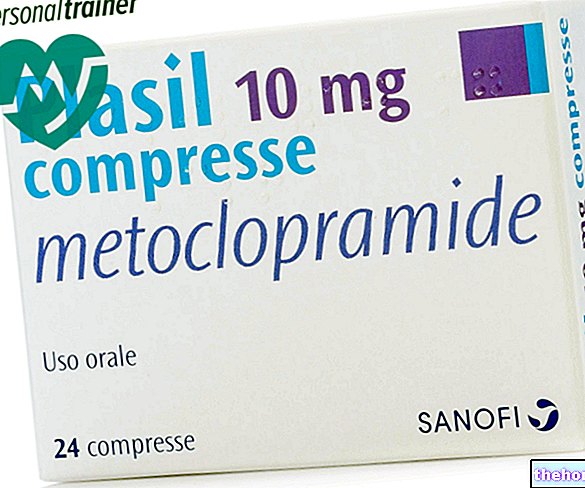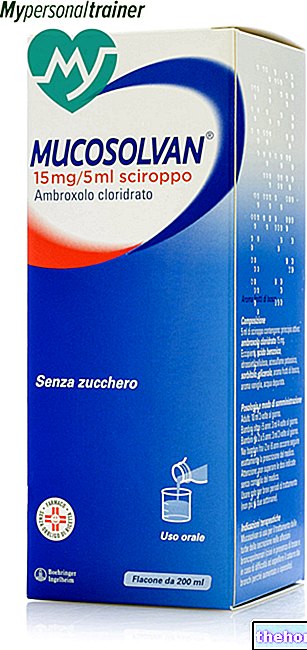Active ingredients: Polygeline
EMAGEL 35 g / l solution for infusion
Why is Emagel used? What is it for?
PHARMACOTHERAPEUTIC CATEGORY
Plasma substitute
THERAPEUTIC INDICATIONS
Treatment of severe hypovolaemic conditions in situations where the use of dextran 80-85 is contraindicated.
Contraindications When Emagel should not be used
Known individual hypersensitivity to the active substance or to any of the excipients (anaphylactic / anaphylactoid reactions have been observed).
States of hypercalcemia. Subjects in digitalis therapy. The use of Emagel is subject to certain restrictions in the sense that the doctor, considering the infusion necessary, will have to take special precautions:
- in all those cases in which an increase in intravascular volume and its consequences (eg. increase in systolic ventricular output, increase in blood pressure), a volumetric increase in interstitial fluids or hemodilution may constitute a specific risk for the patient. Examples of such circumstances are represented by: decompensated heart failure, hypertension, esophageal varices, pulmonary edema, haemorrhagic diathesis, renal and postrenal anuria;
- in all those patients in whom the risk of histamine release is greater (eg subjects with allergic / allergoid reactions and patients with a history of histamine response). In the latter case, Emagel can only be administered after starting adequate preventive countermeasures (see "Special Warnings" and "Precautions for Use").
Precautions for use What you need to know before taking Emagel
The infusion must be stopped immediately if intolerable reactions occur. Mild forms of these reactions can be controlled by administering antihistamines. In the presence of severe reactions, the guidelines of modern shock therapy must be followed.
In all those patients in whom the risk of histamine release is greater (e.g. subjects who have experienced allergic / allergoid reactions, patients with a history of allergic diseases such as asthma, or who are at risk of histamine-induced reactions as a result of a cumulative effect due to the concomitant use of histamine-releasing drugs such as anesthetics, muscle relaxants, analgesics, ganglionplegics and anticholinergics) this drug can only be administered after starting adequate preventive measures such as the administration of antihistamine antihistamines -H1 and anti-H2.
In general, the administration of erythrocytes or coagulation factors should be considered - at the latest - when the hematocrit value falls below 25% by volume.
In general, the use of hydro-saline solutions must be evaluated and controlled with data relating to serum levels of K, Ca and pH in order to avoid undesirable effects of electrolytic accumulation or dangerous phenomena of interference with cardiac, renal, pulmonary or central nervous system.
Interactions Which drugs or foods can modify the effect of Emagel
Emagel can be mixed with common infusion solutions (NaCl solutions, glucose solution, Ringer's solution, etc.) as well as with muscle relaxants, barbiturates, circulatory effect substances, corticosteroids, vitamins, tetanus serum, antibiotics of the penicillin group and tetracycline.
Histamine-induced reactions may occur as a result of a cumulative effect due to the concomitant use of histamine-releasing drugs (such as anesthetics, muscle relaxants, analgesics, ganglionplegics and anticholinergics).
However, due to its calcium ion content, it should not be mixed with preserved citrated blood. However, there are no reservations about the association of Emagel with sufficiently heparinized blood.
Warnings It is important to know that:
Infusion of Emagel may cause a transient increase in erythrocyte sedimentation rate (ESR).
Only clear solutions from intact bottles should be used. Since Emagel does not contain preservatives, there is the possibility of secondary pollution of the bottles already opened and treated with non-sterilized means (needles and cannulas). This obviously prevents their use.
The Emagel solution remains clear even at low temperatures, close to the freezing point. However, for physiological reasons, the solution should be infused at a temperature corresponding to that of the body.
For technical reasons, there is a residual volume of air in the containers. Therefore, when using infusion bottles made of plastic it is necessary to keep the infusion pressure under control, since the risk of gas embolism cannot be excluded.
Pregnancy and breastfeeding
Emagel has already been used extensively in pregnancy. Regarding the course of pregnancy, the health conditions of the fetus and the newborn were not observed harmful effects (category A). Nonetheless, in general particular care should be taken in those cases where substitutes for body fluids or volumetric fluids are administered during or immediately after a pregnancy.
Dosage and method of use How to use Emagel: Dosage
The solution is ready for infusion and is administered intravenously.
The amount and duration of the infusion depend on the need for each individual case. Adults are usually given 500 ml in 1-2 hours (about 40-60 drops per minute). In case of severe shock, infusion may be necessary. rapid 500ml under pressure within 5-10 minutes.
Repeated infusions of Emagel are also perfectly tolerated up to a total quantity of several liters in a few days.
Children are usually given 10 ml / kg.
Overdose What to do if you have taken too much Emagel
The need to administer large doses of Emagel requires careful monitoring of circulatory parameters. A possible haemodilution effect can have an impact on the coagulatory potential and on the corpuscular elements of the blood, even if normalization occurs rapidly, at the latest within 24 hours.
Side Effects What are the side effects of Emagel
Transient skin reactions (urticaria, wheals), hypotension, tachycardia, bradycardia, nausea / vomiting, dyspnoea, increased body temperature and / or chills may occasionally occur during or after infusion of plasma substitutes.
Rare hypersensitivity reactions severe enough to reach a state of shock have been observed. In these cases, the countermeasures to be taken depend on the nature and severity of the undesirable effect.
The onset of a secondary effect should determine the immediate suspension of the infusion, with the simultaneous initiation of therapeutic measures commensurate with the nature and severity of the effect itself.
It has been shown that the release of histamine represents the pathophysiological cause determining the onset of secondary effects related to the infusion of Emagel.
The rapidity of the infusion may promote the onset of histamine-induced reactions. See also "Precautions for use" and "Interactions".
Compliance with the instructions contained in the package leaflet reduces the risk of undesirable effects. It is important to inform the doctor or pharmacist of any undesirable effect, even if not described in the package leaflet.
Expiry and Retention
Expiry: see the expiry date printed on the package.
The validity period is intended for the product in intact packaging, correctly stored.
Attention do not use the medicine after the expiry date indicated on the package.
storage
Store at a temperature not exceeding 25 ° C.
Keep this medicine out of the reach of children.
COMPOSITION
1000 ml of Emagel contain:
Active principle: polygeline 35 g (corr. to a nitrogen content of 6.3 g);
Excipients: sodium chloride; potassium chloride; calcium chloride and water for injections. The corresponding electrolyte concentration is: sodium ion 145 (mmol / l); potassium ion 5.1 (mmol / l); calcium ion 6.25 (mmol / l); chloride ion 145 (mmol / l).
Chemical-physical data:
Average molecular weight about 30,000 (*)
relative viscosity (+ 35 ° C) 1.7 - 1.8
pH of the solution for infusion 7.3 + 0.3
freezing point below +3 ° C
(*) determined using the most recent analytical techniques
The colloid osmotic pressure of a 3% solution of Emagel coincides with that of the plasma. The 3.5% solution is therefore slightly hyperoncotic: in this way the reflux of water from the tissues is facilitated and the formation of edema is prevented. The viscosity corresponds to that of human plasma.
PHARMACEUTICAL FORM AND CONTENT
Solution for infusion. 500 ml bottle.
Source Package Leaflet: AIFA (Italian Medicines Agency). Content published in January 2016. The information present may not be up-to-date.
To have access to the most up-to-date version, it is advisable to access the AIFA (Italian Medicines Agency) website. Disclaimer and useful information.
01.0 NAME OF THE MEDICINAL PRODUCT
EMAGEL 35 G / L SOLUTION FOR INFUSION
02.0 QUALITATIVE AND QUANTITATIVE COMPOSITION
1000 ml of Emagel contain:
active principle: polygeline 35 g (corr. to a nitrogen content of 6.3 g).
Chemical-physical data: average molecular weight about 30,000 *; relative viscosity (+ 35 ° C) 1.7 - 1.8; pH of the solution for infusion 7.3 ± 0.3; freezing point: below + 3 ° C.
The colloid osmotic pressure of a 3% solution of Emagel coincides with that of the plasma.
The 3.5% solution is therefore slightly hyperoncotic: in this way the reflux of water from the tissues is facilitated and the formation of edema is prevented. The viscosity corresponds to that of human plasma.
Emagel is sterile and non-pyrogenic and does not contain preservatives.
(*) determined using the most recent analytical techniques.
For excipients, see 6.1.
03.0 PHARMACEUTICAL FORM
Solution for infusion.
04.0 CLINICAL INFORMATION
04.1 Therapeutic indications
Treatment of severe hypovolaemic conditions in situations where the use of dextran 80-85 is contraindicated.
04.2 Posology and method of administration
The solution is ready for infusion and is administered intravenously.
The amount and duration of the infusion depend on the need for each individual case. Adults are usually given 500 ml in 1-2 hours (about 40-60 drops per minute). In case of severe shock, infusion may be necessary. rapid 500ml under pressure within 5-10 minutes. Repeated infusions of Emagel are also perfectly tolerated up to a total quantity of several liters in a few days.
Children are usually given 10 ml / kg.
04.3 Contraindications
Known individual hypersensitivity to the active substance or to any of the excipients (anaphylactic / anaphylactoid reactions have been observed).
States of hypercalcemia. Subjects in digitalis therapy. The use of Emagel is subject to certain restrictions in the sense that the doctor, considering the infusion necessary, will have to take special precautions:
- in all those cases in which an increase in intravascular volume and the relative consequences (eg. increase in systolic ventricular output, increase in blood pressure), a volumetric increase in interstitial fluids or "hemodilution may constitute a specific risk for the patient .
Examples of such circumstances are represented by: decompensated heart failure, hypertension, esophageal varices, pulmonary edema, haemorrhagic diathesis, renal and post-renal anuria;
- in all those patients where the risk of histamine release is greater (eg subjects with allergic / allergoid reactions and patients with a history of histamine response).
In the latter case, Emagel can only be administered after appropriate preventive countermeasures have been initiated (see 4.4).
04.4 Special warnings and appropriate precautions for use
The infusion must be stopped immediately if intolerable reactions occur.
Mild forms of these reactions can be controlled by administering antihistamine drugs. In the presence of severe reactions, it is necessary to comply with the guidelines of modern shock therapy.
In all those patients in whom the risk of histamine release is greater (e.g. subjects who have experienced allergic / allergoid reactions, patients with a history of allergic diseases such as asthma, or who are at risk of histamine-induced reactions as a result of a cumulative effect due to the concomitant use of histamine-releasing drugs such as anesthetics, muscle relaxants, analgesics, ganglionplegics and anticholinergics) this drug can only be administered after starting adequate preventive measures such as the administration of antihistamine antihistamines -H1 and anti-H2.
In general, the administration of erythrocytes or coagulation factors should be considered - at the latest - when the hematocrit value falls below 25% by volume.
Infusion of Emagel may cause a transient increase in erythrocyte sedimentation rate (ESR).
In general, the use of hydro-saline solutions must be evaluated and controlled with data relating to serum levels of K, Ca and pH in order to avoid undesirable effects of electrolytic accumulation or dangerous phenomena of interference with cardiac, renal, pulmonary or central nervous system.
Only clear solutions from intact bottles should be used. Since Emagel does not contain preservatives, there is the possibility of secondary pollution of the bottles already opened and treated with non-sterilized means (needles and cannulas).This obviously prevents its use.
The Emagel solution remains clear even at low temperatures, close to the freezing point. However, for physiological reasons, the solution should be infused at a temperature corresponding to that of the body.
For technical reasons, there is a residual volume of air in the containers. Therefore, when using infusion bottles made of plastic it is necessary to keep the infusion pressure under control, since the risk of gas embolism cannot be excluded.
04.5 Interactions with other medicinal products and other forms of interaction
Emagel can be mixed with common solutions for infusion (NaCl solutions, glucose solution, Ringer's solution, etc.) as well as with muscle relaxants, barbiturates, substances with an effect on the circulation, corticosteroids, vitamins, tetanus serum, antibiotics of the penicillin group. and tetracycline.
Histamine-induced reactions may occur as a result of a cumulative effect due to the concomitant use of histamine-releasing drugs such as anesthetics, muscle relaxants, analgesics, ganglionplegics and anticholinergics).
04.6 Pregnancy and lactation
Emagel has already been used extensively in pregnancy. Regarding the course of pregnancy, the health conditions of the fetus and the newborn were not observed harmful effects (category A).
Nonetheless, in general particular care should be taken in those cases where substitutes for body fluids or volumetric fluids are administered during or immediately after a pregnancy.
04.7 Effects on ability to drive and use machines
No interference with the ability to drive and use machines has been reported from clinical practice.
04.8 Undesirable effects
Transient skin reactions (urticaria, wheals), hypotension, tachycardia, bradycardia, nausea / vomiting, dyspnoea, increased body temperature and / or chills may occasionally occur during or after infusion of plasma substitutes.
Rare hypersensitivity reactions severe enough to reach a state of shock have been observed. In these cases, the countermeasures to be taken depend on the nature and severity of the undesirable effect.
The onset of a secondary effect should determine the immediate suspension of the infusion, with the simultaneous initiation of therapeutic measures commensurate with the nature and severity of the effect itself.
It has been shown that the release of histamine represents the pathophysiological cause determining the onset of secondary effects related to the infusion of Emagel.
Rapid infusion may promote the onset of histamine-induced reactions. See also 4.4 and 4.5.
04.9 Overdose
The need to administer large doses of Emagel requires careful monitoring of circulatory parameters. A possible haemodilution effect can have an impact on the coagulatory potential and on the corpuscular elements of the blood, even if normalization occurs rapidly, at the latest within 24 hours.
05.0 PHARMACOLOGICAL PROPERTIES
05.1 Pharmacodynamic properties
Pharmacotherapeutic group: plasma substitutes.
ATC code: B05AA06.
Emagel contains polypeptides (obtained by thermal lysis of gelatin) polymerized through links with urea bridges. Emagel is a clear, yellowish colloidal solution.
The tolerability and the restoring action of the circulation after administration of Emagel have been demonstrated by the results of extensive animal experiments.
Plasma replacement experiments in rats have made it possible to establish that Emagel is able to replace up to 80% of circulating plasma. As shown by microchemical and histological tests,
Emagel is not accumulated in the parenchymal organs. Alterations of organic functions (hepatic, renal, etc.) have not been shown even with high dosages. Emagel, like gelatin, can be broken down by endogenous enzymes.
Emagel, with the use of serological tests, has not shown antigenic properties; the product has the ability to release histamine.
Emagel has been extensively tested in the clinic.
The circulating half-life is about 4 hours and corresponds to the therapeutic needs. After 48 hours Emagel is no longer present in the circulating blood.
The in vitro experiments suggest that the polypeptide chains present in the Emagel are broken down in the organism by proteolysis and that the liberated amino acids are used for the synthesis of proteins.
05.2 "Pharmacokinetic properties
Approximately 85% of the administered Emagel is eliminated by the kidney; 10% is eliminated in the faeces; about 3% is catabolized by proteolytic enzymes.
05.3 Preclinical safety data
General and local tolerability was good in all controlled animal species: rats, rabbits, guinea pigs and dogs. Both in the acute experiment and in the chronic one with repeated administration by subcutaneous, intraperitoneal and intravenous routes, the animals showed no pathological reactions.
Hepatic and renal tolerability are good.
No changes in the red or white series of blood were observed. Specific blood group reactions (AB0 and Rh system) are not affected by Emagel.
06.0 PHARMACEUTICAL INFORMATION
06.1 Excipients
NaCl, KCl, CaCl2 and water for injections. The corresponding electrolyte concentration is (mmol / l): cations: Na + 145, K + 5.1, Ca ++ 6.25; anions: Cl-145.
06.2 Incompatibility
Due to its calcium ion content, Emagel should not be mixed with citrated preserved blood. However, there are no reservations about the association with sufficiently heparinized blood.
06.3 Period of validity
2 years.
06.4 Special precautions for storage
Store at a temperature not exceeding 25 ° C.
06.5 Nature of the immediate packaging and contents of the package
Emagel is contained in sterile glass bottles or in 500 ml pure polypropylene bottles.
1 bottle 500 ml
06.6 Instructions for use and handling
07.0 MARKETING AUTHORIZATION HOLDER
Piramal Healthcare UK Ltd
Whalton Road, Morphet, Northumberland NE61 3YA
United Kingdom
08.0 MARKETING AUTHORIZATION NUMBER
1 bottle of 500 ml - n. 020310025
14 bottles of 500 ml - n. 020310037
09.0 DATE OF FIRST AUTHORIZATION OR RENEWAL OF THE AUTHORIZATION
January 29, 1964
01 June 2010
10.0 DATE OF REVISION OF THE TEXT
September 2011




























